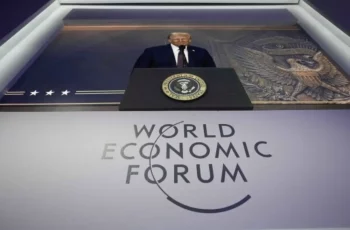
The visit of the US President’s Special Envoy Steve Witkoff to Moscow and official statements about the upcoming meeting between Russian President Vladimir Putin and his American counterpart Donald Trump to discuss the settlement of the conflict in Ukraine once again raise the question of a possible cessation of hostilities and the beginning of a peace process if the conditions are acceptable to all parties. Although all talk about peace, contradictory connotations and additional questions arise. Will the objectives of the Special Military Operation, which were announced by the Russian leadership, be achieved? Will the proposed truce weaken Russia, or, conversely, will it provide new opportunities to defend its interests? What will happen to the sanctions?
The upcoming meeting and possible negotiations are taking place amid the expansion of Russia’s zone of control on the line of contact, thus the fears of disrupting military and political success through diplomatic solutions become quite obvious. Historical precedents of the Russian-Ottoman wars and, in particular, the insidious policy of Britain, and later the United States, raise the stakes.
However, first of all, when thinking about the peace settlement, it is necessary to take into account that we understand it somewhat differently from, say, representatives of the Anglo-Saxon culture. An excursion into etymology is important for comprehension of what we will deal with later.
In modern Russian, the word ‘Mir’ has, in fact ,two meanings. These are: 1) the space that surrounds us, i.e. planet Earth – World, and 2) a state of Peace and harmony. In political science, the Latin term Pax is often used, from which the English word Peace is derived. Most often, the word Rax is used together with an adjective, for example, the expression Pax Britannica is known, which described the power of the British Empire and the existence of its colonies around the world. Pax Americana, i.e. the American-style ‘Peace’ emerged in the second half of the twentieth century, when Britain, for a number of reasons, was no longer able to exercise its world domination and colonies in different parts of the world began to break away from it. But the classical Latin-Russian dictionary (edited by Dvoretsky) provides an expanded interpretation of the word Pax in relation to antiquity. Then there was Pax Romana, and it is described as “a part of the world pacified by Roman conquests, i.e. the Roman Empire.”
It therefore means that Pax – is not just a mere state of peace, harmony and consent. Firstly, it is a consequence of the actions of the political entity that imposes this Pax. This can be done by force of arms or persuasion, but ” pacification ” in itself implies that it was not carried out by the good will of those who exist in this world order. Secondly, these are certain territorial outlines. The Pax Romana included the Mediterranean region, Gaul (Gallia) and Britain, but Scythia, Persia, and, even more so, distant India and China never fell under Roman rule.
In the 21st century, different realities apply. If it is not possible to “pacify” someone through the force of arms, then, most likely, they will resort to the application of economic instruments, cultural influence, as well as the services of a third party, be it a supranational body or an influential international organization. It seems that right now such very scenario of the Pax can be put into force, which will impose certain restrictions on Russia. That is, it will be a kind of version of Pax Americana, which will come close to our borders (taking into account preliminary information that the United States refused to provide guarantees that Ukraine would not join NATO).
Thuswise, this is one option and the worst for Russia. What other options of the current pacification can there be? Although Zelensky also constantly declares the need for peace, it is quite obvious that this process has little to do with Ukraine, since this country is not a sovereign entity. It’s a big stretch to talk about Pax Europae, since those are Russia and the United States who are the main actors in the negotiation process.
If there is a division of spheres of influence on the territory of Ukraine, as it was at the Potsdam Conference, then two world orders will get along and possibly have a buffer zone – the American and the Russian. As it was in the era of bipolarity, but back then the border ran much further to the West. Here, the critical and operational issue will be where exactly the dividing line will run. By administrative-territorial borders? Along the Dnieper (taking into account the withdrawal of the Ukrainian Armed Forces from the occupied part of the Kherson region)? Or will Pax Russica go much further West, where the historical lands of the Russian world are located?
It should be emphasized that Pax Russica implies something broader than just a zone of military and political control of Moscow. This includes cultural and historical space, trade and economic activity, and the free, unencumbered activities of compatriots in other countries. Although, based on the etymological context, Russia is currently conducting the very military pacification through its Special Military Operation.
In a broader geographical and time-based strategic perspective, the following nuance is important. With Pax Americana in Europe (and this is obvious under the current EU and NATO regime), Pax Russica will not be able to transform into Pax Eurasiatica, even with the active participation of the rest of the EAEU members and the accession of India, China and Iran with their vision of their own Pax, which can organically coexist within Ordo Pluriversalis, a geopolitical multipolar order.
Therefore, it is necessary to establish a proper foundation capacity (guarantees, fulfillment of requirements, communication of imperative positions) not only for the adequate implementation of Pax Russica, but also to create favorable conditions for the future of Pax Eurasiatica, which obviously implies the disappearance of the transatlantic regime, through which Pax Americana continues to exercise its hegemony on the western peninsula of Eurasia.










Comments